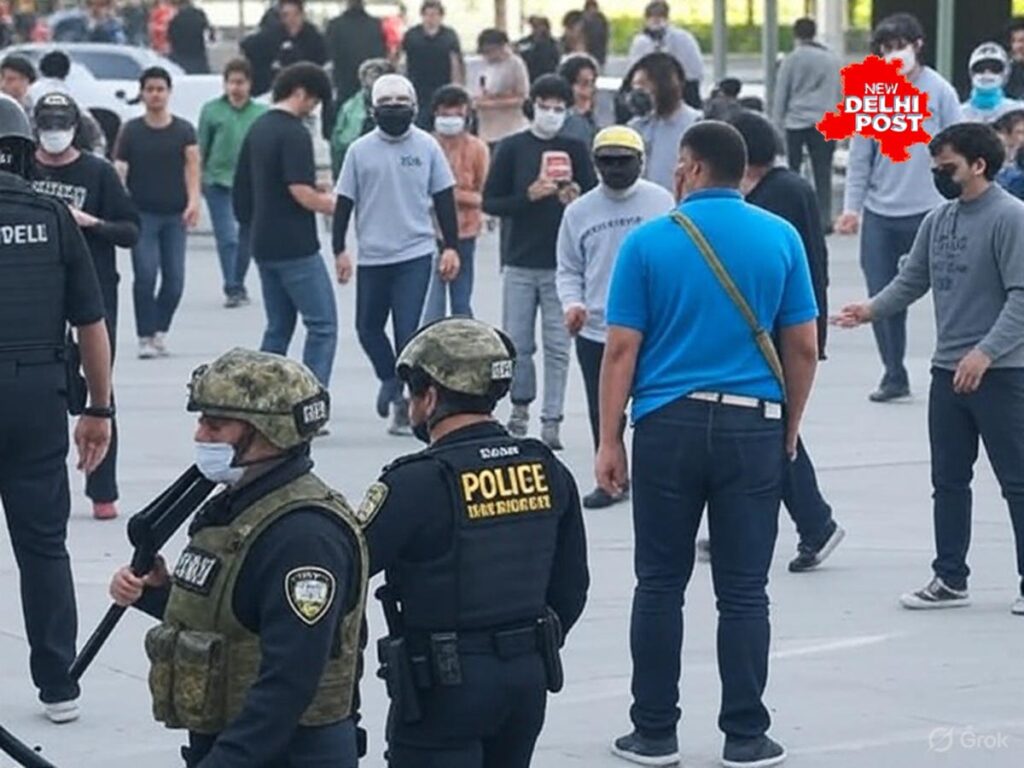President Trump’s deployment of National Guard troops to quell immigration protests sparks chaos, with violent clashes and political backlash escalating in Los Angeles.
Los Angeles, California – On June 9, 2025, tensions in Los Angeles reached a boiling point as thousands of protesters flooded the streets in response to President Donald Trump’s unprecedented deployment of the National Guard. The third day of demonstrations saw demonstrators blocking the 101 Freeway, setting fire to at least four self-driving Waymo cars, and clashing with law enforcement using tear gas, rubber bullets, and flash bangs. The unrest, centered in downtown Los Angeles, reflects growing resistance to Trump’s aggressive immigration crackdown.
Violent Clashes and Unlawful Assembly
Police patrolled on horseback and in riot gear, standing alongside National Guard troops guarding the Metropolitan Detention Center. Protesters shouted “shame” and “go home” as tensions flared, with some throwing concrete, rocks, electric scooters, and fireworks at California Highway Patrol officers on the freeway. The Los Angeles Police Department (LAPD) declared an unlawful assembly, dispersing crowds with smoke-filled canisters and crowd-control munitions. By evening, southbound lanes of the 101 Freeway remained closed, and flash bangs echoed through downtown as police expanded the unlawful assembly order to several blocks.
Political Backlash and Deployment Controversy
Democratic Governor Gavin Newsom condemned the deployment as a “serious breach of state sovereignty,” requesting Trump withdraw the 300 troops already on the ground—far fewer than the 2,000 authorized. Mayor Karen Bass echoed this sentiment, calling the move a “provoked chaos” driven by an ulterior agenda rather than public safety. The deployment, the first since 1965 without a governor’s request, harks back to President Lyndon B. Johnson’s intervention during a civil rights march in Alabama. White House spokesperson Abigail Jackson countered, dismissing Newsom’s claims as “a bald-faced lie,” asserting pre-existing unrest justified the federal action.
Roots of the Unrest
The protests began Friday with federal agents arresting over 100 immigrants in LA’s fashion district, a Home Depot parking lot, and other sites. Saturday’s clashes in Paramount and Compton saw demonstrators hurling rocks at Border Patrol vehicles, met with tear gas and pepper balls. A prominent union leader was among those arrested for impeding law enforcement. Despite federal claims of no raid at Paramount’s Home Depot, fear drove protests, with the week’s immigrant arrest tally exceeding 100.
Trump’s Stance and Escalation Threats
Trump, invoking a legal provision for “rebellion or danger of a rebellion,” authorized the National Guard deployment and hinted at further escalation. Speaking in Morristown, New Jersey, he vowed, “We’re gonna have troops everywhere,” warning against letting the country “be torn apart.” The U.S. Northern Command confirmed 500 Marines at Twentynine Palms were on standby, raising fears of a broader military response. Former Vice President Kamala Harris, a Los Angeles resident, decried the move as a “cruel, calculated agenda to spread panic,” rallying support for protesters defending rights.
Community Impact and Ongoing Tensions
The unrest has instilled fear in LA’s diverse communities, particularly its large Latino population. Schools reported lower attendance, and businesses faced disruptions as residents stayed home. Community leaders, including state lawmaker Jose Luis Solache, highlighted the pervasive anxiety since Trump’s inauguration, intensified by the Guard’s presence. Legal challenges are mounting, with some arguing the deployment violates state autonomy, while others see it as a necessary response to violence.
Future Outlook
As protests enter a fourth day, the situation remains volatile. Newsom’s threatened lawsuit against the administration and Bass’s calls for de-escalation clash with Trump’s resolve to enforce mass deportations. The burning of Waymo cars and freeway blockades signal potential economic fallout, with tech firms assessing damages. Analysts warn that without dialogue, the standoff could spiral, testing the limits of federal and state powers amid a polarized nation.


